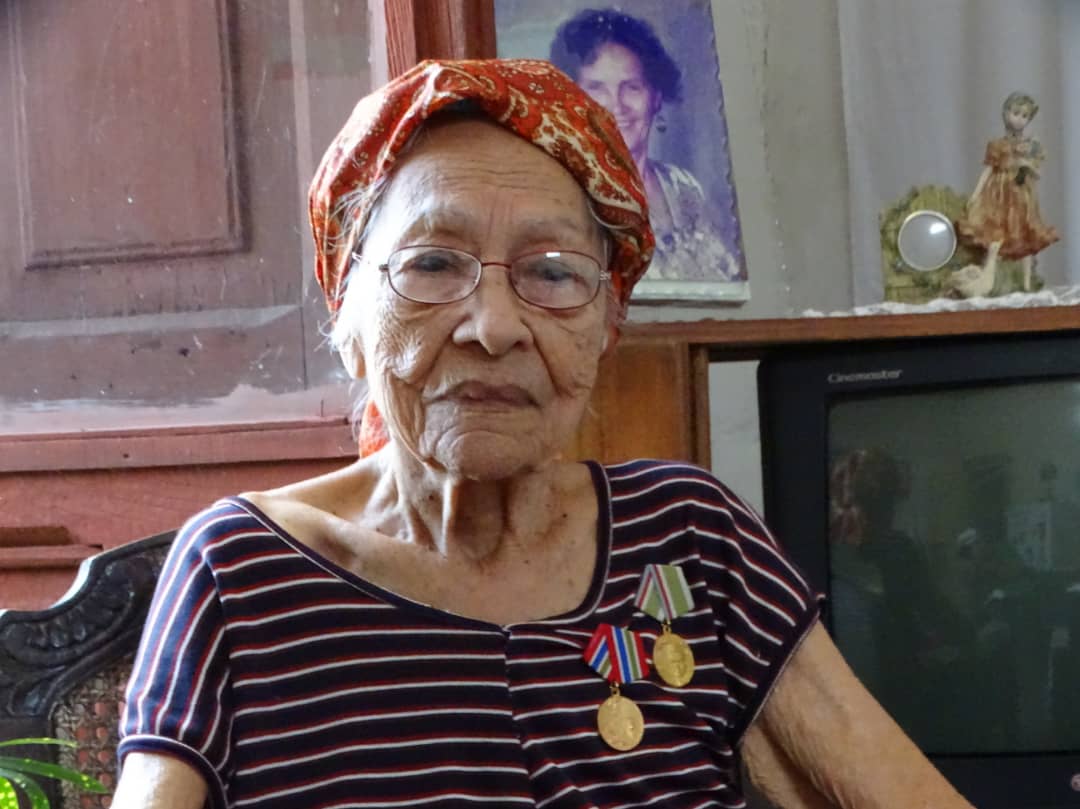
Camagüey, March 8.- Cachita was not afraid of danger, one afternoon, in an astonishing way, she boarded a bus heading to the land of the old Coca-Cola bottling plant, on the outskirts of the city and heading towards the East.
On her lap she carried a small, carefully wrapped box that looked like a gift. Inside that container were short weapons, destined for Alberto Agramonte, a revolutionary who was part of the clandestine group to which she also belonged.
A police officer sat next to me; if he asks me, we'll see what I can think of to say, but no, he didn't even pay attention to me. For him, she was simply another passenger on the bus, she pointed out.
Caridad Balboa Rodríguez, resident in General Gómez and Apodaca, carried out various missions in the revolutionary struggle, among them the transfer of weapons, the preparation of little flags and the surveillance of the movements of Batista's henchmen stand out.
In her home on Industria Street, she also carried out revolutionary actions, along with other young friends, providing cover so that Enrique Expósito “Tin” could place the July 26 flag on top of a pole.
She also mentions Manolo Rodríguez, brother of the martyr Tato Rodríguez Vedo, who, despite being elevated, visited his house and offered guidance on what to do.
Caridad remembers that Manolo arrived loaded with tarecos and grenades and said Moli, how come you come like this? If they try to stop you, I will explode a grenade so they don't catch you.
When she was young, it was not common for her to study, her entire family, including her mother and sister, worked as laundresses, processing the clothes of various clients, meanwhile, her younger brother was in charge of finding and returning the clothes to her birthplace.
After the triumph of the Revolution, they moved to Santayana, between San José and Línea, there he began to work and told his mother: “You will no longer wash clothes. “Now you will have money for the house.”
Her sister, whom Caridad also considers a revolutionary, was dedicated to manual arts, making lined coat racks and very pretty robes for girls.
Her first job with the State was in the Lugareño and Santa Rita school cafeteria, then he worked other jobs and finally ended up at the Enrique Hart boarding school in Saratoga.
Her friends told her: “Cachi, you have to get out of there. “It is very far away and your family left the country.”
She followed the advice, studied typing and attended night classes until completing the ninth grade, then began working at the Poultry Company, located in Avellaneda and General Gómez, where he finally retired.
This noble woman does not omit that she was also a catechist of the Catholic Youth, throughout her life, she had a husband, whom she divorced, but had no children.
A few days after the advent of last January 1st, when 65 years had passed since the triumph of the Revolution, to which she and other women of the clandestine struggle contributed their grain of sand, she exclaimed:
Had not thought of that. One thinks that what he did was stupid, there was no value in it, but if he starts to think we take a risk.
She added that on December 30 or 31, 1958, on the bed in her house there was a Bohemia magazine and on the cover the face of a beautiful child, with blue eyes, and he wondered if next year would be as beautiful as this one. child; and in the morning I receive tremendous news, Batista left, that was a party.
Cachita is an intrepid woman who usually becomes serious on her face, but in her heart she reflects joy that overflows in the presence of visitors and those who care for her, who hope that next June she will turn 89 years old. (Enrique Atienzar Rivero/Radio Cadena Agramonte Collaborator) (Photo: Humberto Cid Gonzalez/Radio Cadena Agramonte)